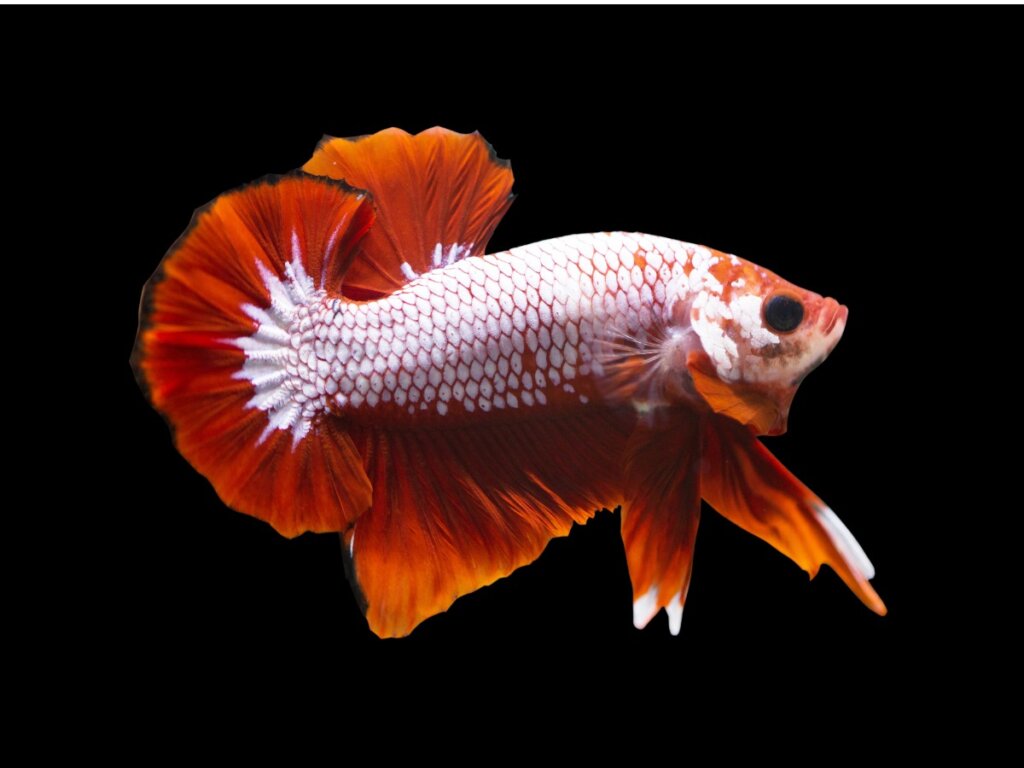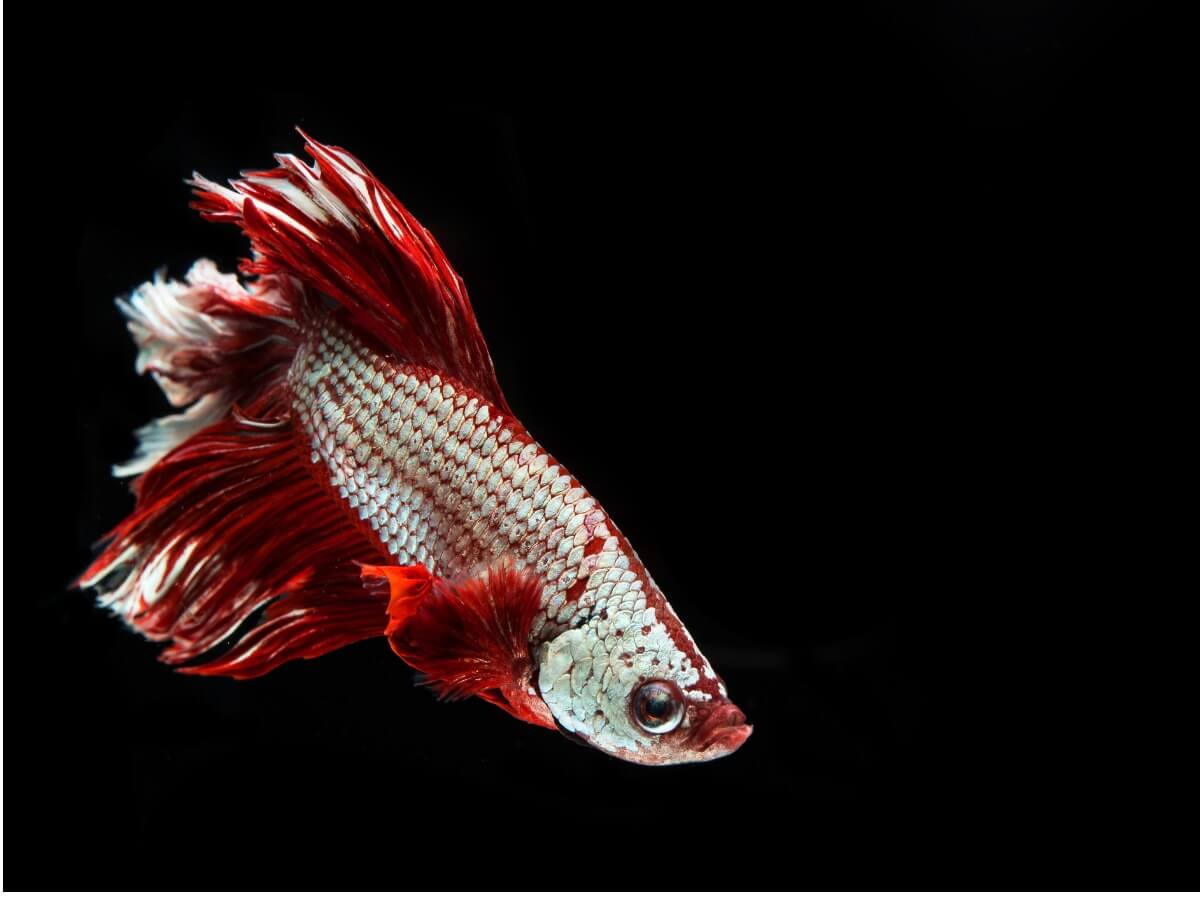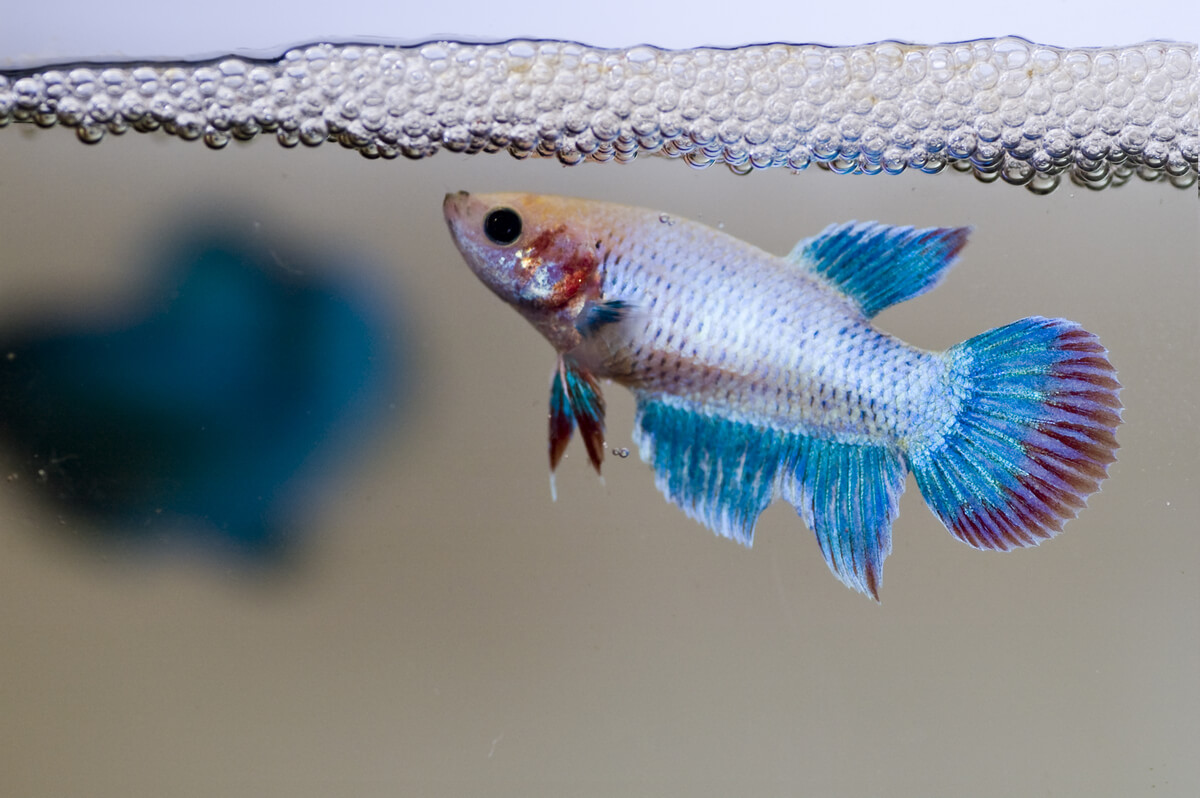Dragonscale Betta Fish: Habitat, Characteristics and Care

The Dragonscale betta fish (Betta splendens) or Siamese fighting fish is a freshwater actinopterygian native to Southeast Asia, specifically Cambodia, Laos, Malaysia, Indonesia, Thailand, and Vietnam.
It should be noted that, although there are more than 73 species of the genus Betta, all the fish raised in captivity have been derived from wild lineages of Betta splendens. The dragonscale betta fish is one of them.
To date, up to 37 varieties of Siamese fighters have been registered, all of them with different colors, shades, and tails. Selective breeding is creating very beautiful specimens, but the potential problems derived from this must also be taken into account. Here’s everything you need to know to care for a dragonscale betta fish.
Betta fish habitat
Before immersing ourselves in the care of any species in captivity, we need to get to know its natural habitat, as this will give us many answers. Betta fish are tropical freshwater animals that live in very shallow, stagnant bodies of water such as floodplains, salt marshes, and rice paddies. It’s precisely this relationship with rice fields that led to its domestication.
Although they live in small areas with considerable stagnation, these animals need a lot of vegetation to survive in the natural environment. They’re strict insectivores, and, therefore, require plants and algae that attract small crustaceans and invertebrates. Among other foods, betta fish adore mosquito larvae and zooplankton.
The dragonscale betta fish can’t be found in the wild, as it’s the product of successive crosses between captive-bred specimens. Wild bettas are much less conspicuous, in shades of green, brown and gray.
Physical characteristics of the dragon betta fish
In general, all bettas grow to 6-8 centimeters (2.4 – 3.2 inches) in length, regardless of their morphotype. The tail and fins can vary in length, and, together with the coloration, this distinguishes the different types of these Siamese fighters present on the market: Marble, Dragon, Bi-colored, Butterfly, Cambodian, to name but five.
The dragonscale betta fish stands out for having a reddish base color and a rough profile, with a tail that’s much less conspicuous than that of other varieties. What captivates the aquarists of the world is its iridescent and metallic tone in the scales, which, in turn, are thickened and hard, as if they were the scales of a dragon.
Its flattened body and glistening scales give this fish a tough, shiny appearance.

Sexual dimorphism
When it comes to betta morphotypes, we always refer to the males. The females are much less conspicuous, so few people choose to keep them, unless they want to reproduce a specific variety. This species has a very marked sexual dimorphism.
Compared to males, females are small and have much less vibrant colors. Not only are they smaller, but their fins, tail and gill covers are much less conspicuous, as indicated by experts.
The behavior of the dragonscale betta fish
As with all bettas, males are extremely aggressive and will fight to the death with another of their species if placed in the same aquarium. Nor will they leave the females of their own species alone, and so it’s always advisable to keep the specimens separate, in aquariums of 15-20 liters of capacity.
However, these fish are very inquisitive, active, and curious animals. You’ll be able to see how the specimen follows you throughout the aquarium, and how it interacts with the plants – you’ll be amazed at its fast and frantic swimming. They certainly have a lot of personality!
Feeding
As we’ve already said, all betta fish are strict insectivores, so they will never feed on plant matter. Their diet must be rich in protein, so you can only buy specific dry foods for them and it’s not worth buying generic flakes. If a non-specific diet is chosen, the animal will begin to show nutritional deficiencies in a short time.
On the other hand, in captivity it can be observed that betta fish love to hunt. In some stores you have live mosquito larvae, brine shrimp and daphnia, small invertebrates that inhabit freshwater columns in natural environments. Combining the dry scales with these natural prey will make your betta fish appear lustrous and energetic.
Aquarium care
It is common to see betta fish being kept in plastic cups or tiny fish tanks for sale. Although they can survive for a time in this state, we do not recommend it in any case, as long-term diseases can appear. Ideally, a male should have an aquarium of at least 5-10 liters (10-20 pints) for himself, but it’s better if it’s larger (20L – 40 pints).
If you want to have a betta fish in ideal conditions, you should also get a small filter and a heater, as the water shouldn’t drop below 25 °C (77 F). Although they’re very resistant fish, they require water cycling, specific pH values and a minimum quality in the environment. In the following list, we’ll tell you some of the most important requirements:
- Water temperature: from 24 to 28 °C (75 – 82 F). If this temperature can’t be reached in winter, you’ll need to acquire a heater.
- The pH of the water: A value of 7 is ideal, although the fish can cope with higher. This parameter can be measured with specific pH strips on sale in professional stores.
- Water changes: An aquarium without a filter requires 2 changes a week of 25% and one weekly change of 100%. This puts a lot of stress on the animal and can cause disease, and so it’s much better to get a filter and change 25% of the water each week. Never use water fresh from the tap because of the amount of chlorine.
- Aquarium mates: It’s better for the fish to be alone at all times. However, some bettas are tolerant of cleaner fish and some bottom fish.
Betta fish have an organ called a labyrinth, which allows them to obtain oxygen directly from the surface. However, this doesn’t mean that they’re invincible or resistant to bacterial diseases and poor water quality. If you don’t get a minimally equipped aquarium, your betta will die in no time.
Bettas can’t be kept long-term in plastic cups or plastic boxes with water.
Associated diseases
Any betta fish that’s kept in unsuitable conditions will suffer from long-term pathologies. One of the most common conditions in these animals is fin rot, caused by bacterial agents such as Pseudomonas fluorescens. In this condition, the fins begin to rot until they just form a stump.
Apart from fin rot, poorly cared for fish can develop eye inflammations, ulcers, fungal growths on the surface of their scales, exophthalmias – bulging eyes – and much more. It isn’t that betta fish are more prone to these conditions, but they often tend to suffer from them due to the misconception that they can put up with second-rate care.
Dragonscale betta fish are said to be prone to blindness, but this have not been scientifically verified.
Reproduction of the dragonscale betta fish
Dragonscale betta fish reproduce like other members of their species. If a male and female get together and she is interested, then the male will begin to perform a type of nuptial dance, in the form of various poses and acrobatics. To impress their potential mate, the males make various bubble nests and the female examines them.
Once the courtship has taken place, the female and the male will “embrace” in a reproductive act, in which the eggs are released and external fertilization occurs. The male takes care of the offspring and a betta reaches sexual maturity 5 months after birth.

Final notes
The dragonscale betta fish is one more variety of Betta splendens, in addition to the more than 30 that already exist. They’re beautiful, dazzling specimens, but you must bear in mind that the successive crosses between them have given rise to the morphotype that can take their toll on the animal in the long term.
If you want to get a dragonscale betta fish, then go to a professional breeder who can ensure the health of the fish. In case of doubts or distrust, it’s better that you look for a “more general” variant that has fewer problems.
All cited sources were thoroughly reviewed by our team to ensure their quality, reliability, currency, and validity. The bibliography of this article was considered reliable and of academic or scientific accuracy.
- Caring for your betta. Recogido a 16 de junio en https://pijac.org/sites/default/files/pdfs/betta_new.pdf
- Dragon betta, aquariadise. Recogido a 16 de junio en https://www.aquariadise.com/dragon-betta/
- Betta care, bettafish.org. Recogido a 16 de junio en https://bettafish.org/care/
- Male betta fish care. Recogido a 16 de junio en http://ccpetstore.com/editor_files/1501679784_Bettta%20Fish.pdf
